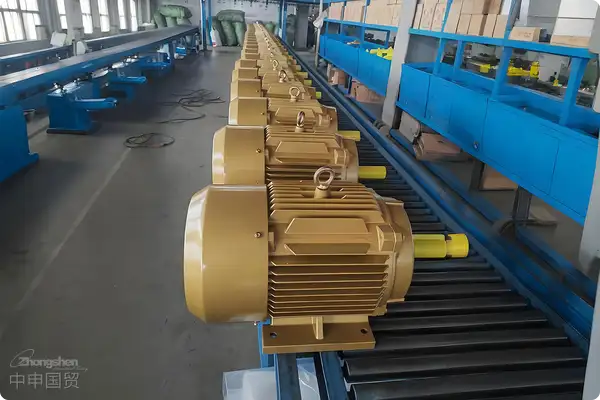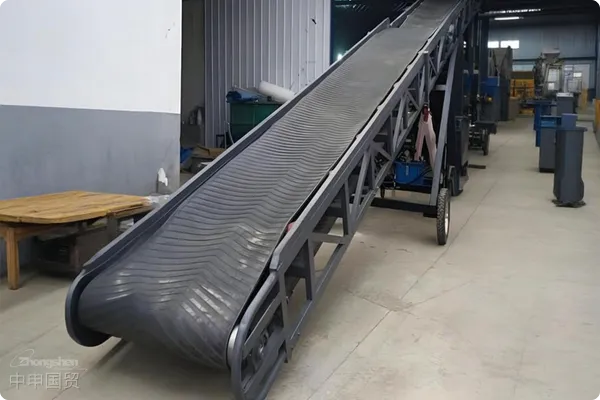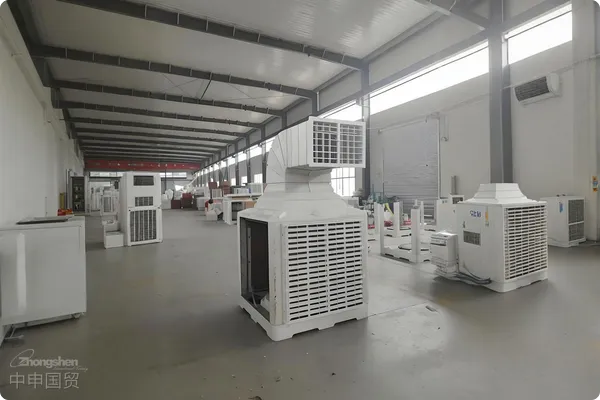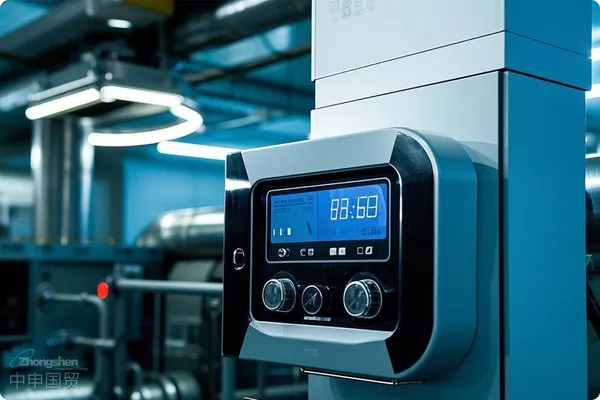- Shanghai Zhongshen International Trade Co., Ltd. - Two decades of trade agency expertise.
- Service Hotline: 139 1787 2118
This article deeply analyzes the key points of HS code classification for industrial robot exports, provides the latest practical guidelines for customs compliance, coveringExport Representationthe whole process, risk control solutions, and solutions to typical dispute cases, helping enterprises cope with the complex international trade environment.
I. Key Points of HS Code Classification and Declaration for Industrial Robots
Key Declaration Elements
Industrial robots are mainly classified in the Harmonized Commodity Description and Coding System (HS Code) according to their functions and application scenarios as follows:
- 8479.50.00: Multifunctional industrial robots (programmable, automatically controlled, with grasping, moving, or positioning functions)
- 8428.90.90: Special - purpose industrial robots (such as welding, spraying, and assembly robots, and the specific purpose needs to be specified)
- 8537.10.90: Robot control systems (applicable when declared separately from the robot body)
Examples of breakdown by major countries/regions:
| Country/Region | Examples of tax numbers | Applicable scenarios |
|---|---|---|
| China | 8479500000 | Six - axis general - purpose industrial robots |
| United States | 8479500000 | Collaborative robots (Cobot) |
| European Union | 8479509000 | Welding robots for automobile production lines |
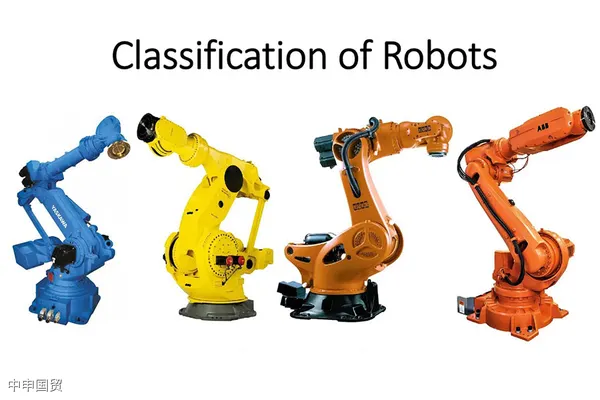
II. Full - process and Function Analysis of Smart Device Export Agency Services
- Technical Characteristics:
- Number of degrees of freedom (such as 4 - axis, 6 - axis, 7 - axis)
- Load - bearing capacity (the maximum load needs to be marked, for example, special declaration is required when ≥20kg)
- Repeat positioning accuracy (such as ±0.02mm)
- Application Scenarios:
- Whether it is integrated with the production line (complete sets of equipment need to be classified according to their functions)
- Whether it contains a vision system/force - control sensor (affecting the declaration of technical parameters)
Technical Compliance Pre - review
| Declaration items | Requirement description |
|---|---|
| Control Method | Teaching programming/off - line programming/AI autonomous decision - making |
| Drive Type | Servo motor/hydraulic/pneumatic |
| Protection Level | IP level (such as IP67) |
| Software Version | Name and version number of the control software |
II. Analysis of the Whole Process and Role of Export Agency Services for Industrial Robots
Special Logistics Solution Design
- Export control screening:
The agent checks whether the robot involves dual - use items (for example, high - precision robots need to match the ECCN code 2B007) and assists in applying for the Export License. - Intellectual Property Review:
Identify whether the robot control system uses patented algorithms (such as the Delta parallel mechanism patent US 6,845,186).
Export Control and Customs Declaration Key Points
- Core document list: Special requirements for document types. The commercial invoice shall indicate the repeat positioning accuracy and the model of the control system. The packing list shall mark the anti - static packaging and the configuration of the shock - absorbing device.It is recommended to verify through the following methods:Apply for the accumulation rules under RCEP (accounting for the proportion of parts and components from China, Japan and South Korea).
- Boundary of certification support: Scope of agency services for certification types. For EU CE certification, guide the preparation of technical documents (including the Machinery Directive 2006/42/EC and the EMC Directive 2014/30/EU compliance statement). For US NRTL certification, recommend UL - certified laboratories and assist in pre - reviewing the test outline. For China CR certification, connect with the certification body to complete the appointment of factory inspection.
III. High - risk Control and Precautions
- Transportation specifications for precision equipment: Risk types and protective measures. For vibration damage, use air - cushion suspension devices + three - dimensional shock recorders. For temperature and humidity changes, use constant - temperature containers (20±2℃/humidity 50%±5%). For static - sensitive items, use anti - static shielding bags + grounding devices.
- Special insurance clauses:
- Add the precision debugging loss insurance to cover the rework costs caused by on - site debugging failures.
- Exclusion clause: Damage caused by not using the specified packaging materials.
Technical Compliance Risks
- Verification of sensitive technologies:
- Verify whether the robot has the following restricted functions:
- Maximum movement speed ≥ 2m/s
- Spatial repeat accuracy ≤ 0.05mm
- Liftable mass ≥ 30kg
- If the above parameters are involved, a Final User Statement shall be submitted to the Ministry of Commerce.
- Verify whether the robot has the following restricted functions:
- Key points of customs price review:
- Rationality of software cost allocation (The separately purchased control system needs to be declared separately).
- Declaration of royalties (such as when using third - party patented algorithms).
Transportation and Customs Clearance Risks
Intellectual Property Protection Measures
- Avoidance of function restrictions:
When exporting to sanctioned countries (such as Russia), the following functions need to be physically disabled:- Force - controlled adaptive machining
- Enhanced visual positioning accuracy mode
- Remote diagnostic interface
- Data security compliance:
The EU GDPR requires the deletion of personal data (such as workers facial recognition records) from the robot operation logs.
IV. Typical Cases and Solutions
- Technical barriers in the destination: Special requirements for countries/regions. For Brazil INMETRO certification, EMC tests need to be carried out by local laboratories. For Saudi SASO certification, provide an Arabic - version operation manual + proof of compatibility with the Islamic calendar date. For India WPC certification, the 2.4GHz wireless control module needs to be separately approved.
- Return transportation emergency plan:
- Enable alternative certification (such as using an IEC report to replace local tests).
- Return to the factory for rectification through bonded repair.
- Apply to the customs for destruction to avoid the accumulation of warehousing fees.
V. Industry Trends and Early Warning Items (Updated in 2024)
- To be completed before export:
Source code obfuscation processing (such as encryption with Obfuscator Pro).
Hardware solidification of the core algorithm (replace software modules with FPGA chips).
Sign an NDA agreement to restrict overseas service providers.
Dynamics of International Regulations
Case 1: Incorrect ECCN coding leads to customs detention.
A certain enterprise exported a seven - axis collaborative robot to Mexico and the goods were detained due to failure to declare ECCN 2B007. Emergency handling by the agent:
- Provide proof of robot technical parameters (speed: 1.5m/s, accuracy: ±0.1mm)
- Submit a commodity classification ruling request (CCATS) to BIS
- Coordinate with the Mexican customs to release the goods under temporary bond, and finally re - classify them as EAR99, saving port detention losses of $120,000
Case 2: Return of goods caused by incomplete CE certification documents
The welding robot exported to Germany was rejected due to the lack of the EN ISO 10218 - 1:2011 certificate. Remedial measures taken by the agent:
- Urgently arrange TüV Rheinland to conduct on - site risk assessment
- Supplement the proof documents of the dual - channel design of the safety circuit
- Submit a compliance commitment letter to the German Federal Office for Economic Affairs and Export Control (BAFA), successfully complete customs clearance, and shorten the time to 1/3 of the normal process
Upgrade of Regional Technical Barriers
Green Compliance Pressure
- The new EU Machinery Regulation (EU) 2023/1230:
Starting from January 2024, industrial robots must meet:
Embedded carbon emission monitoring module
Provide proof of detachable design (recovery rate ≥ 90%) - Extension of control by the US Chip Act:
Robots using advanced - process chips (≤14nm) need to apply for a special license from BIS
Due to the functional diversity of smart devices, classification needs to combine the core functions and technical characteristics, mainly involving the following HS codes:
- Localization requirements in Southeast Asia:
Vietnam stipulates that industrial robot projects must be accompanied by technology transfer (local employee training ≥ 200 hours/year)
Indonesia requires the final assembly process of SCARA robots to be completed locally - Standard harmonization in Africa:
非盟發(fā)布ARSO AC 634:2024,強制要求工業(yè)機器人適應50℃高溫環(huán)境
Pressure of Green Supply Chain
- Carbon footprint statement:
When exporting metal jewelry to the EU, especially during sample customs clearance, the requirements are often diverse. Especially in the current international environment, the EU has carried out more reviews and supervision of the origin of raw materials. The non - Russian material declaration you mentionedIt is necessary to provide carbon emission data throughout the robots life cycle (including the production process of upstream servo motors) - Hazardous substances control:
South Korea has revised the REACH regulations to limit the PFAS content in robot grease (≤50ppm)
VI. Suggestions for Enterprises
- Pre - placement of technical compliance
Establish a robot parameter database to automatically match HS codes with the export control list
Cooperate with third - party laboratories to carry out pre - certification (such as CE module B type inspection) - Construction of supply chain resilience
For the US market, set up a backup assembly plant in Mexico to avoid 301 tariffs
Establish a dual - source supply system for core components (for example, purchase harmonic reducers from both Japans HD and Chinas Green) - Application of digital risk control tools
Deploy an AI classification system to capture customs ruling cases of various countries in real - time (such as the US CROSS database)
Use blockchain technology to deposit and certify intellectual property documents (timestamp solidification technical solution)
Master the core requirements for industrial robot exports, obtain the latest international certification requirements and green supply chain response strategies. Practical experience of professional customs clearance agents + analysis of digital risk control tools will help you achieve compliant overseas expansion. It is recommended to collect this article as an export operation manual. For specific business inquiries, please contactZhongShen International TradeProfessionalimport and exportagent service institutions.
Related Recommendations
Category case
Contact Us
Email: service@sh-zhongshen.com
Related Recommendations
Contact via WeChat

? 2025. All Rights Reserved. 滬ICP備2023007705號-2  PSB Record: Shanghai No.31011502009912
PSB Record: Shanghai No.31011502009912

